Learn how and when to wean off breast milk whether your baby is 1 year old, 15-months-old, or a toddler. OT and mom shares tricks for gently transitioning to milk, stopping nursing to sleep, and other weaning challenges.
Affiliate links used below. See our full disclosure.
As an OT, I have shared lots of baby and toddler milestone tutorials over the years, including How to Wean from a Bottle.
The topics of feeding and eating can be complicated and stressful for many parents, no matter the age of your child. But when you have a baby or toddler, it can feel even more complex because of how much information is out there.
Weaning from breastfeeding is one area where there are a lot of opinions, and let’s be honest- lots of conflicting advice. You’ve probably read all kinds of information or even gotten advice from friends or family members.
As a mom who has done it three times with my children that were exclusively breast-fed, I’m here to share with you my best advice on how to stop breastfeeding gently, safely, and appropriately.
My oldest, NEVER took a bottle, which was really stressful, and my third would only do it if he had to. So believe me, I know the stress that comes along with this.
Of course, I’m fully aware that this can be a bit of a controversial topic. So, let me say, right now, very clearly, that this post IS NOT about when a mother should stop nursing, although I will share some general info on the topic.
This post is about how to stop breastfeeding, when a mother and child are ready. Women have many different reasons for wanting to wean at various ages. I completely welcome constructive and helpful comments, but let’s be supportive of each other’s very personal decisions.
So whether you are wondering how to wean an 11, 12, 13, 14, 15-month-old, or even an older baby or toddler, read on to hear my best tricks as a mom and occupational therapist.
When to Stop Breastfeeding and Start the Weaning Process
I know I’m leading with the when, even though I just said it is a personal decision, and it is. But, I know many of you aren’t sure when you want to wean, so let me give you some objective information.
Many moms start to wean at 12 months, right around baby’s first birthday.
I will tell you this, around 15 months of age, children enter a new cognitive phase and begin to make strong associations or attachments. Nursing to this point could make it more difficult to wean with some of the strategies I’ll discuss here, but certainly not impossible.
I don’t say that to persuade you towards weaning earlier, but want you to be aware of all the information. While I also fully support mothers that decide to nurse longer, I will caution you to be aware of those feedings affecting consumption at solid food meals.
Some toddlers can handle having “nursings” throughout the day as they please and still sit down to eat their meals, but others fill up on milk and subsequently don’t transition to eating more food.
That can be a slippery slope, as I’ve seen many times. If toddlers don’t get the practice and exposure to eating foods, sometimes they can become very picky eaters throughout childhood. If you continue to nurse, I would encourage you to treat meals as a priority as well and be aware of how recently they have nursed.
Find out other reasons kids become picky here.
For a variety of reasons, I decided to wean my own children around one year old. They were 14, 12, and 13 months, respectively. It was a gentle process that was not traumatic for my children in any way.
I did not transition them to a bottle, because at those ages, they didn’t require one. And, if you are weaning over 12 months, I would recommend phasing out those feedings totally and not substituting with infant formula or milk in a bottle or sippy cup at those times.
If you are weaning before 12 months old, you will need to replace it with infant formula in a bottle or possibly a sippy cup. Check out my complete how-to guide for getting a nursing baby to take a bottle.
How to Stop Breastfeeding – at 1 year old, 14, 15, and even 18 months?
So how do you actually start to end breastfeeding? Well, it is a transition, so there may be a little bit of dancing back and forth on this as you make sure both you and your baby are comfortable.
While some babies naturally wean by going on a nursing strike, many need gentle support to make the transition.
If your baby is 8 months old or older, I would first recommend getting them onto a loose schedule, if they aren’t already. I’m not really concerned with specific times, but intervals or around routines.
For instance, with my third, I always nursed him when he woke up from his naps, the time changed but that routine didn’t. That allowed me to plan our meals in a structured way as well, which gave him exposure to foods and helped him develop an appetite for food, too.
(You’ll find links for sample schedules at the end of this section)
Once your baby or toddler is nursing at regular intervals and not on demand, you will choose one of those times to take away. This should be the easiest time of day, usually one of the nursings in the middle of the day.
Going about this process also allows your milk supply to gradually accommodate the change in schedule so that your milk production continues to match the demand.
Typically bedtime and early morning feeds are more difficult to phase out.
The first few days that you take away those feedings you will want to change the routine a little bit and have food and a drink in a cup ready to go. For instance, when I was taking away those after nap nursings,I would go into his room, pull open the blinds right away and start talking to him real silly to get him distracted.
I’d pick him up playfully and take him downstairs (he typically nursed in his dimly lit room quietly before going downstairs). All the while, I’d be saying, “It’s time for snack! I have your drink, too!”
There were a few times where he whined and pointed to the chair he normally nursed in. I would try once more to distract him and if that didn’t work, then I’d nurse him. That is part of the transition.
If another adult were here, I would have them get him out of his crib as well, which helped change things up.
Once I eliminated that first feeding, I would wait 3-7 days before I took away another feeding, depending on how slow I wanted that to go. Then, I would follow the same procedure. I would do that all the way until I was left with morning and night time nursings.
Morning was always easier to get rid of, so I would make sure I had breakfast completely ready, so he could eat right away.
Personally, I always decided to leave the bedtime nursing session for another month or so, but you don’t need to do that. That was more for me, as weaning each of my children was a very emotional time, and I knew I needed to not rush it.
Keeping that bedtime feeding gave me time to really take in those last days of our special connection. After about a month or so, I would make sure they had a really good dinner (serve a favorite food) or a late snack and then I would let Dad do the bedtime routine.
In all cases, my kids just let my husband put them to bed, as if they had never been nursed, while I sobbed in another room. My children were fine, and I knew, for me, for us, it was time.
To sum up what we’ve just talked about, and fill in some blanks, when you’re ready to wean, you’ll want to:
- Take away one feeding at a time
- Eliminate the easiest feedings first
- Offer a meal instead of nursing. All kids should eat every 2.5 – 3 hours, count from the start of one meal to the start of the next
- Give a cup at each meal, and place either breast milk or cow’s milk in the cup. I prefer a straw cup (see how to teach your baby to drink from a straw). From an OT and mom friendly perspective, I love these cups in particular: Playtex Sipsters, Munchkin Flex Straw, and Advent Straw Cup
- The first time you give cow’s milk, mix it with a 25-50% blend of breast milk. This will help them adjust digestively and to the taste. After a day or two of successful consumption, you can continue to add less and less breast milk until it is straight cow’s milk or toddler formula, if you choose.
- Prior to weaning, give your baby water at each meal, which will help them get used to having a drink. Have water available throughout the day in a cup that they have access to once you start serving milk with their meals. Some babies will want to have both at a meal, which is fine for a short transition period.
If you are looking for more specifics on feeding schedules, click on the ages you need: 6-7 months, 8-10 months, and 11 months plus for samples. These, too, are just a guideline, but should give you some direction. Adapt them as needed.
Troubleshooting Common Breast Weaning Roadblocks
Although stopping breastfeeding can be as easy as I just made it sound, sometime parents hit some roadblocks. I’m going to run through some common ones to help you troubleshoot.
With all of the suggestions below, know that it’s important to stay consistent and keep trying. All of my boys ended up loving cow’s milk, but it took a month or so before they were drinking it really well, usually by the time they were completely weaned from the breast.
Keep in mind that once a baby turns 1, they only require 16 ounces of a milk source.Read more here about how much milk your baby should drink.
- What if baby refuses a cup of any type:
-
- Try and try again – every day, at every meal, put the milk in the cup and don’t pressure them. Offer it and even demonstrate, but don’t force. You can experiment with serving cold and warm if you like. If your toddler spits it out, that’s okay, it’s all part of the process.
- Try pumped milk – if you are willing and able, pump and offer that milk in the cup. It will seem foreign and some will likely be wasted, but some babies do better with the familiar taste.
- Focus on 2-3 different types of cups – cycle through a few different kinds of cups, maybe some with bright colors or a silly character on it.
- Water in a cup during the day – always have the water in a cup throughout the day. Give it to them in the car, in the bath, outside, wherever.
-
- How to stop nursing to sleep:
-
- Change up the routine (as described in the previous section)
- Transitional object – if your child doesn’t already have a special object like a stuffed animal or blanket, start encouraging one. Give it to them every time you are nursing, put it in their arms when you lie them down. Every time.
- Well-fed – I don’t want you to overly worry about this, so many parents do naturally, but it will give you peace of mind in knowing that their tummy is full. Serve a later dinner that is a favorite or a bedtime snack, where you can give milk in a cup. Knowing their well-fed will help you feel better if they protest a little and they will be less likely to request nursing.
-
- Baby won’t stop nursing and crying:
-
- Distract – while I urge you to not push your baby too fast, some will protest a little. This is when you’ll want to change gears and do something really exciting. I remember with my oldest, I always used to feed him on the couch in the middle of the day and I’d rearrange the pillows to support my arm. In the process of weaning, I started to do that just to straighten up and he saw me and thought it was time to nurse. He didn’t cry, but I quickly grabbed him and stood up, saying, “Oh my goodness, did you just hear that car go by?” We went over to the window to have a look and he forgot about it in a second.
- Offer another drink – without making to big of a deal about it, provide a drink instead, “Oh, here’s your water.” Notice, I didn’t ask, I just made a statement.
- Cuddles – give lots of these at other times, so they feel that connection with you still.
-
Tips for success
-
- Don’t feel rushed, watch for your child’s acceptance and adjustment.
- You may be emotional, this is normal. Make sure you are feeling comfortable with your decision.
- Don’t listen to other people’s opinions.
Did I miss anything? Let me know in the comments, I’ll be happy to answer. And if you’ve been through this before, share your tips, it will be helpful to everyone that stops here.
If you want more about how to feed your baby or toddler, sign up for the weekly newsletter so you don’t miss a thing! When you do, you’ll grab an exclusive free printable with crucial tips to setting up good eating habits and wading through picky eating (which happens to most toddlers! Sign up here!
Alisha Grogan is a licensed occupational therapist and founder of Your Kid’s Table. She has over 19 years experience with expertise in sensory processing and feeding development in babies, toddlers, and children. Alisha also has 3 boys of her own at home. Learn more about her here.
More on Babies and Toddlers
Ultimate List of Meal Ideas for Babies and Toddlers
How to Transition to Table Foods
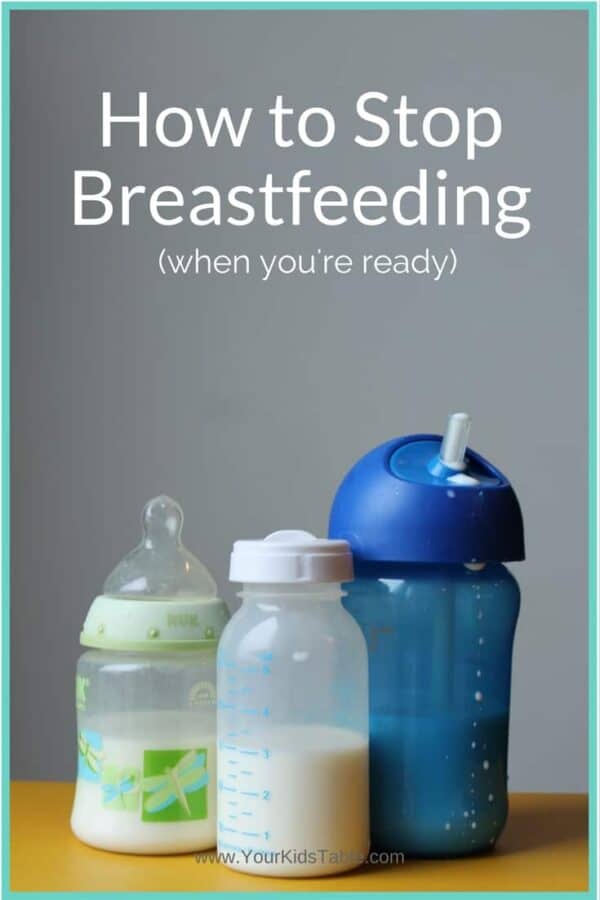

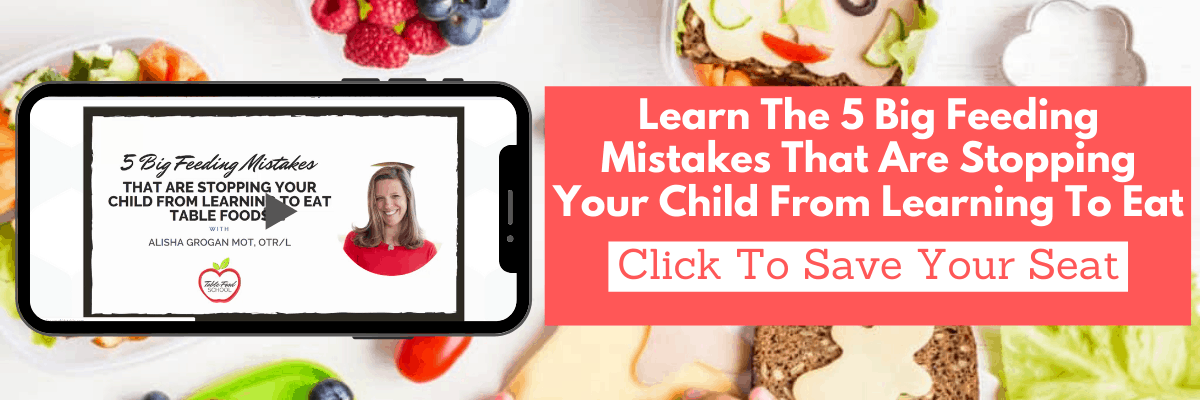
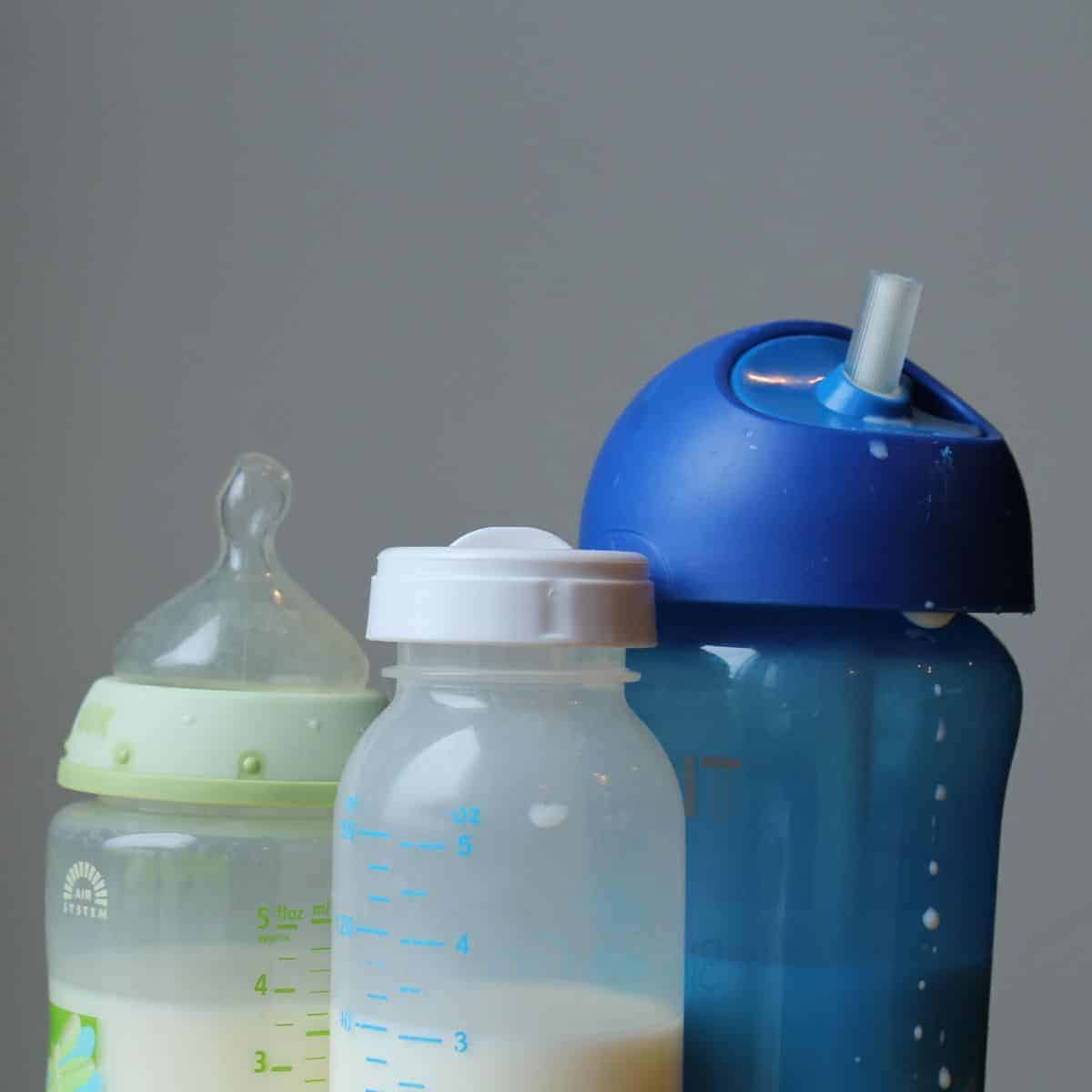

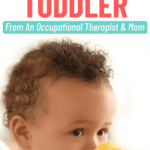
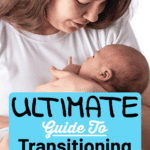
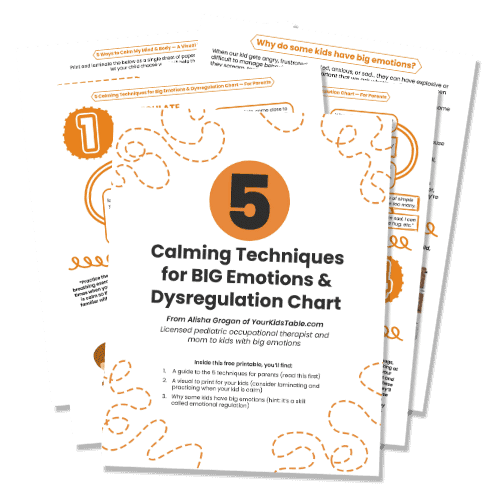
Hi, I have an 11 month old. He’s always taken bottles before but I had a break from working for 2 months and now he will not drink from a cup or bottle at all. I recently started working again and he will not drink anything while I am gone for 8-9 hours only eat baby food and I would ideally like to wean at 12 months. Any tips on how to get him to take a cup? It’s been 3 weeks and I don’t want to fry up and he be left with nothing but he’s completely refusing a cup and just wants breast regardless of how hungry he gets in my absence.
Hi Mya, this can be so stressful. Have you read our article on using a cup? This article is specifically on straws, but since he is almost 1, I wouldn’t try the bottle and instead would go straight to a straw cup. There are a few suggestions in there.
Best,
Laura
Your Kid’s Table team member
Hi my baby is 13mos now suddenly doesnt want to feed on bottle. I want to stop breastfeesing soon. Do i offer milk to cup instead of bottle?
Hi Jen! Thanks for reaching out! Definitely start offering their milk in a regular cup or straw cup now that they’re 13 months 🙂
Best,
Kalyn
Thank you for this incredible advice. I have a 13 month old and have been slowly working toward weaning from breastfeeding. I have done a combination of nursing, pumping and using bottles from a few months of age. Nursing was very challenging because she had a poor latch until 4 months of age. She was almost weaned until she got sick several times this flu season, now she’s strictly nursing. We are down to nursing upon waking, before her naps, before bedtime, and with the nighttime feeds which are very short and she goes back to sleep quickly. I’ve heard the nighttime feeds are usually the hardest to kick, so I will definitely be implementing your recommendation for giving her a blanket or stuffed animal. THANK YOU L! This has been the most helpful article I’ve read. You are very good at relaying information succinctly.
Hi Sallye! Thank you so much for reaching out and sharing your story/feedback with us!! We are thrilled to hear how much you enjoyed this post and how helpful it was for you. Our goal is to always relay helpful, accurate, and thoroughly explained information to all parents and caregivers 🙂
Best,
Kalyn
Hi, firstly thank you for all your insight. I have a baby who is very attached to breastfeeding, to the point where as you have said he does not eat as much solids as he should. Frankly I try to offer him solids all day long with 3 meals and snacks, and he may take a couple bite but then he will push away from the table, and then try to nurse as soon as we leave the table. I have tried to gently wean for over a month now (he has just turned 14months) and at first I was successfully pushes him in the afternoon to only nurse before bed (he has one nap and nurses to sleep). That said, I dont know if he caught on or what but he is wanting to nurse even more than before now. It is completely exhausting. Ive tried distracting but I feel like I am avoiding him now for 6hrs so that he doesnt yank at my shirt which just isnt working. And now it feels like we have gone backwards. Like he knew we were weaning and he is saying no way I want milk more now. Any advice would be great. I dont want to push him if he isnt ready, but I also feel like he may be nursing too much. Honestly it stinks bc breastfeeding should be a beautiful experience for us but it just feels like its gone too far. And I feel like I can’t stop. Thanks so much for your help!
Hi Kylie! Thank you for the helpful article! I regret that I read this a bit too late! I’ve already started weaning BF but apparently it didn’t go smoothly and my supply is almost gone. My 13 month old refuses bottle or cup (open cup or straw cup) of formula or cow’s milk. She only takes cow’s milk with breakfast cereals in it and that wont be more than a total of 100ml per day. She also drinks very little water through out the day so her wet diaper is much less than before. I don’t know if babies will drink enough if they are thirsty at this age or I should worry that she’s going to get dehydrated… I’m also afraid that she’s not going to drink milk anymore! Well, I’m stressed… what should I do?
Hi Emy! Thanks for reaching out! I wouldnt stress too much about her cow’s milk intake, since she no longer needs it now that she’s over the age of 1. Dairy recommendation for this age is only 16oz/day. Will she drink water in a cup/straw cup/sippy cup? Try offering her more water throughout the day, preferably in a fun cup that she likes and will be drawn to, so that she can stay hydrated.
Best,
Kalyn
My daughter refused milk at first. I diluated it water at first. Half n half. She drank it. Then i slowly did less n less water. She loved milk after that
Hi Kalyn
Thanks for the article. It’s got great advice as I have no idea where my start. My 13 month old and I have got into a habit of feeding to sleep before naps and overnight which she is waking up multiple times. How do I wean if she sees breastfeeding as a a sleep association? Would I pick a nap time and rock her instead? I don’t have a clue what to do and I’m starting to notice as she is more aware starting to want to breastfeed more again for comfort during the day. I love the bond but I’m so tired with so many night time wake ups. Help
Hi An! Thanks for reaching out! Weaning can be difficult! But yes, try to gradually remove one feeding at a time. If she’s used to breastfeeding for comfort before sleep, try replacing it with another form of comfort- like reading a book, hugging a soft toy, cuddling, etc. During the day, you can also try replacing a breastfeeding with offering a snack, which might help keep her full enough to sleep through the night. Above all, keep trying! Consistency is key! Hope that helps!
Best,
Kalyn
Is it necessary to pump once nearly fully weaned? This is my struggle at the moment. My 14 month old at least seems less interested in asking for BF just more concerned about my breasts. Don’t want an infection. And with my first I weaned earlier because I was going back to work.
Hi there! It isn’t necessary to continue pumping, especially if youre trying to wean. If youre worried about engorgement or an infection, try gradually reducing your pump frequency until you’ve completely stopped. Or, you can try to replace pumping with hand massaging or warm compresses. Hope that helps!
Best,
Kalyn
Hi thanks for your advice.but I need to get something right,what if I decided to breastfeed my baby after a week of not breastfeeding what happens to the baby?
Hi Marzee! If you start breastfeeding again, after stopping for a bit, nothing bad will happen to the baby. The only thing that may happen would be a reduced milk supply or a baby that no longer wants to latch. Continue to breastfeed for as long as you and baby choose to do so 🙂
Best,
Kalyn
Hello! Thank you for a very useful article. I wondered if you could provide any advice on weaning a 16 month old from night time breastfeeding. She doesn’t have any feeds during the day but at night she is literally stuck to me and won’t sleep otherwise. Have tried soft toy/blanket and my hubby has been putting her to sleep for the last few couple of months every night. We have tried everything during the night from dummies/bottle (she hates both) rocking her or rubbing her back (sometimes these work but take ages and feel from
Exhaustion of crying). I have also tried white noise which also didn’t help.
Would really appreciate any advice!!
Thank you,
A very tired mummy
Hi Mela! Thanks for reaching out! I know it sounds redundant, but just keep trying those techniques as much as possible! Another trick you can try, would be to gradually reduce the feeding session each time! So for example, if one feeding lasts 10 minutes, reduce it by 2 minutes each night. So, the next night, the feeding would only be 8 minutes. This gradual decrease should eventually help ease her into weaning completely. Maybe even try talking her through it and explaining the nighttime routine to her, so that she better understands and has somewhat an idea of what to expect. Hope that helps!
Best,
Kalyn
Thanks for the great advice!
I’m currently weaning day feedings and it’s going well.
A few questions:
Suggestions on eliminating the overnight time/morning feed? I’m always so engorged so I worry how to just eliminate this one.
I’m considering keeping the nighttime feed before bed. If I stop all the other feedings, will my milk dry up??
Hi Holly! So glad you’re finding this post/information helpful! For weaning off nighttime feedings, try switching up baby’s routine or putting baby to bed with a special blanket or soft toy. Even better if Dad or someone else puts baby to sleep, so that baby is not reminded of nursing. Stopping most feedings will impact your milk supply. So if you’re worried about milk supply or engorgement, you can always pump and then offer pumped breast milk via sippy/straw/regular cup! Hope that helps!
Best,
Kalyn
Hi,
I am starting to wean my daughter from day feeds as I am returning to work. She currently eats twice before both her naps. Do you have some schedule suggestions? I noticed you suggested weaning the afternoon then the morning one. I am going to start there as she ideally needs to be down to her naps without milk for daycare. Do you give milk plus breast milk after her meal ? I am just confused on how to get her off breastfeeding during the day before I return to work. I am okay with feeding her morning and night.
Hi Kaleigh! Thanks for reaching out! We suggest giving milk at the meal once the previous formula/breast milk is eliminated. We do have a post that maps out a sample schedule- check that out here! Hope that helps!
Best,
Kalyn
I had successfully weaned my son from day time feeds and was just waiting for the right time for the night time feelings; but now my son has been demanding to nurse during the day. I can’t distract him with anything and it’s only when I’m home during the day. He doesn’t care if he’s with the sitter or my parents/in-laws. I don’t know what to do.
Hi Terri! We understand how stressful it can be. For during the day, keep trying to distract him. Try to replace the breast feedings with meals/snacks or by offering milk or other beverages in cups throughout the day. If he struggles with accepting different beverages in cups, try offering pumped breast milk in a cup. For nighttime feedings, try switching up her routine or putting her to bed with a special blanket or soft toy. Even better if Dad or someone else puts her to sleep, so that she’s not reminded of nursing. I know it sounds redundant, but keep trying over and over- consistency and repetition are key!
Best,
Kalyn
Hi I’m wondering how early you can start this approach, my son is 10.5 months and I’m keen to stop breastfeeding at 12 months?
Do I start dropping feeds now or is that going to impact his nutrition?
Thank you for the wonderful article!
Hi Bree! It really depends. If your baby is also getting formula, you can start these steps now, if you choose. However, if breastmilk is his only source of nutrition (aside from some solids), then continue to do so until 1 year of age. Once he turns 1, he can then transition off formula/breastmilk. Hope this helps!
Best,
Kalyn
Ive found this article really valuable so thank you! If you could offer any advice on weaning at night i would really appreciate it. My daughter is 11 months old and weaned herself gradually off the day feeds. At night its a different story. Shes using breastfeeding as a comfort and way to sleep, is waking every hour or 2 crying for the comfort from me. I don’t want to attempt controller crying and wondered if you had any alternative ideas?
Thanks
Hi Kylie! Thanks for reaching out! So glad you found this post helpful! Since she is 11 months, you do still need to provide her calories in breast milk or formula. Check out our complete how-to guide for getting a nursing baby to take a bottle here. For nighttime feedings, try switching up her routine or putting her to bed with a special blanket or soft toy. Even better if Dad or someone else puts her to sleep, so that she’s not reminded of nursing.
Best,
Kalyn
Hi Kylie! Wondering what you found helped with your kiddo waking every couple of hours at nighttime wanting to nurse? My son is currently 11 months old and has been doing this since he was about 6-7 months old. He just wants to nurse and then falls right back asleep when he is finished. We have tried soothing him back to sleep but he will not stop crying/fall back asleep without either nursing or having a bottle.
Sincerely an exhausted mama